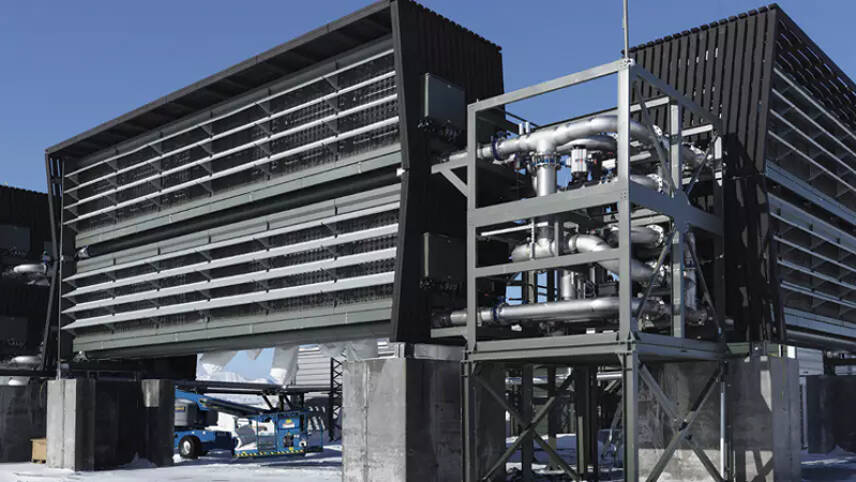Register for free and continue reading
Join our growing army of changemakers and get unlimited access to our premium content

Pictured: Climeworks' Orca DAC plant in Iceland. Image: Climeworks
That is the headline conclusion of a new report published today (31 October) by McKinsey. The report assesses the current global capacity for CCUS. At present, CCUS is covering less than half a percent of annual global emissions. It then looks at the likely need for scaling CCUS to meet the net-zero commitments made by nations, regions and states.
The report cautions that the CCUS sector has “struggled to find its footing” over the past three decades and warns that its success and scaling is by no means guaranteed. It emphasises that the policy landscape for CCUS technologies is, at present, not sufficient in most markets, with a need fore more direct and indirect incentives as well as more targeted regulatory enablement like permitting for developers and the implementation of product standards. More clarity on the future of carbon pricing is also listed as a key policy enabler. Without these enablers, McKinsey notes, revenue streams are cautious and still taking shape.
“Companies have been willing to develop plans but are hesitant to commit capital without regulatory certainty, which has led to cautious approaches to spending on project development beyond feasibility studies,” the report states.
It notes that many buyers of carbon capture are, at present, opting for nature-based options. This is partly because the approach is more mature than some emerging technologies, with some viewing this approach as a better way to guarantee emissions capture. The social and nature-related co-benefits are also appealing. McKinsey believes this trend will likely continue.
But the report concludes that even in ‘conservative’ scenarios, where CCUS scales at a reduced scope and pace, the global capacity will likely grow 60-fold between 2020 and 2050. It also sets out a scenario in which there is a 120-fold increase in this timeframe, or more. This level of increase is what it claims would be needed in the net-zero transition. In both scenarios, capacity growth accelerates after 2030.
McKinsey believes that the early adopters of commercial CCUS at scale will be firms in heavy industrial sectors, who will need to use them within their own facilities to comply with national net-zero transition requirements. Their processes will be hard-to-abate using other technologies, the report states, but their materials will be needed in the future for critical products and infrastructure. This approach is called ‘industrial point-source CCUS’. Other forms of CCUS, including bioenergy with CCUS and direct air capture (DAC), are slated as important but likely to scale later.
The report states that achieving the 120-fold increase in CCUS capacity would require an investment of $130bn annually, through to 2050. It advocates for this to be delivered using a mix of public and private finance, stating that it will not be possible to deliver this funding through either pathway alone.
One of the senior experts in McKinsey’s ESG and sustainability team, Krysta Biniek, said: “For decades, the widespread adoption of CCUS has been predicted to be just around the corner, but so far it has failed to materialise. Today, however, global decarbonization targets and growing demand for green consumer products makes rapid scaling of CCUS not only possible, but necessary.”
UK state of play
Back in August, the UK Government announced the 20 projects that have been shortlisted for the next phase of its CCUS programme. The UK is aiming to fit CCUS technology at two clusters by the mid-2020s, with deployment to take place at two additional clusters by 2030.
That news followed the nation’s first licensing round for projects that will enable the large-scale storage of captured carbon under the North Sea. Also this summer, Tata Chemicals Europe opened a CCS plant at its manufacturing plant in Cheshire, touting it as the UK’s largest in terms of capacity.
The UK Government’s Ten-Point Plan’s contains a target for the UK to capture at least 20 million tonnes of CO2 annually by 2030, but some believe that capacity of just 10 million tonnes will be likely within this timeframe.


Please login or Register to leave a comment.